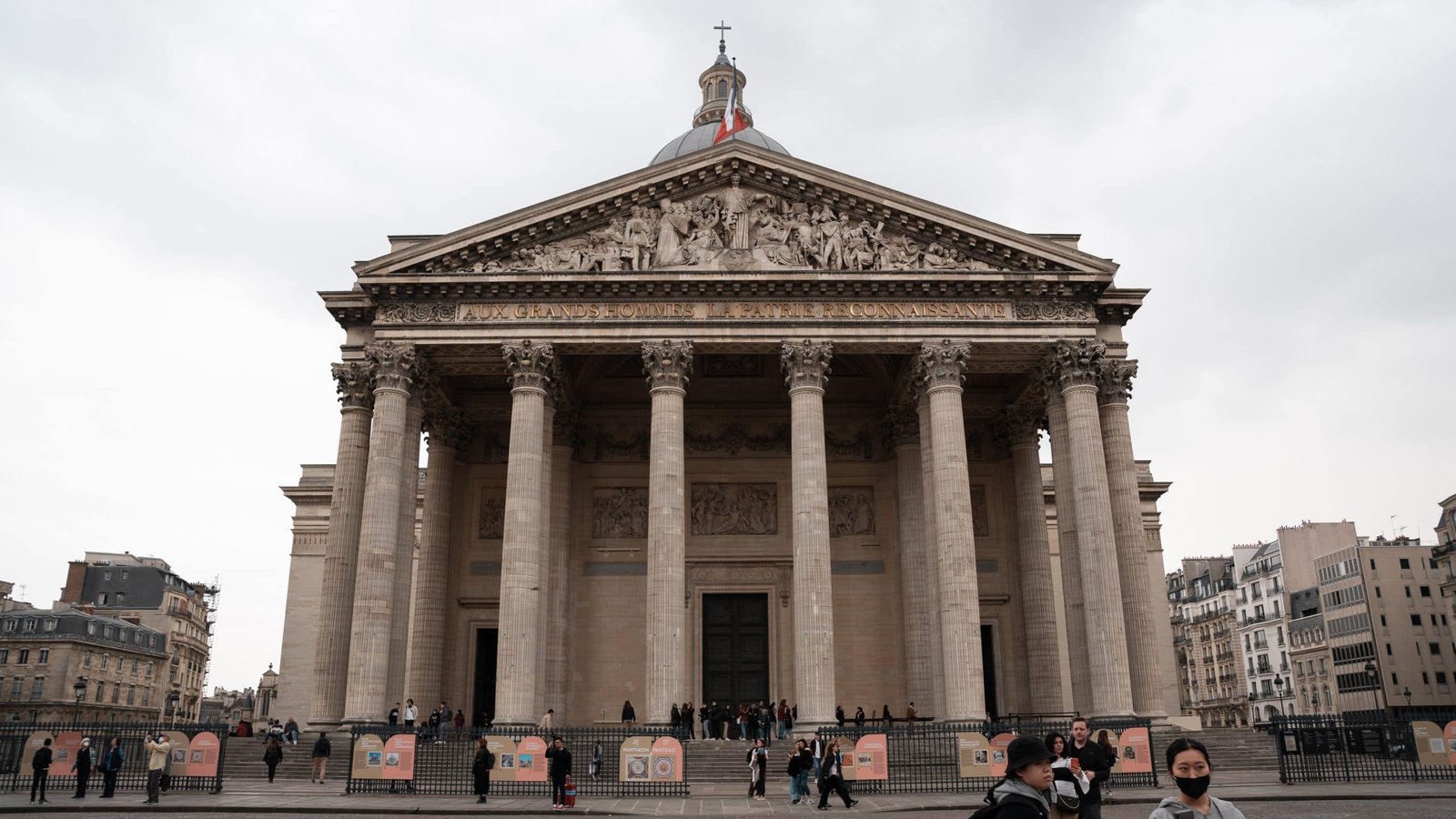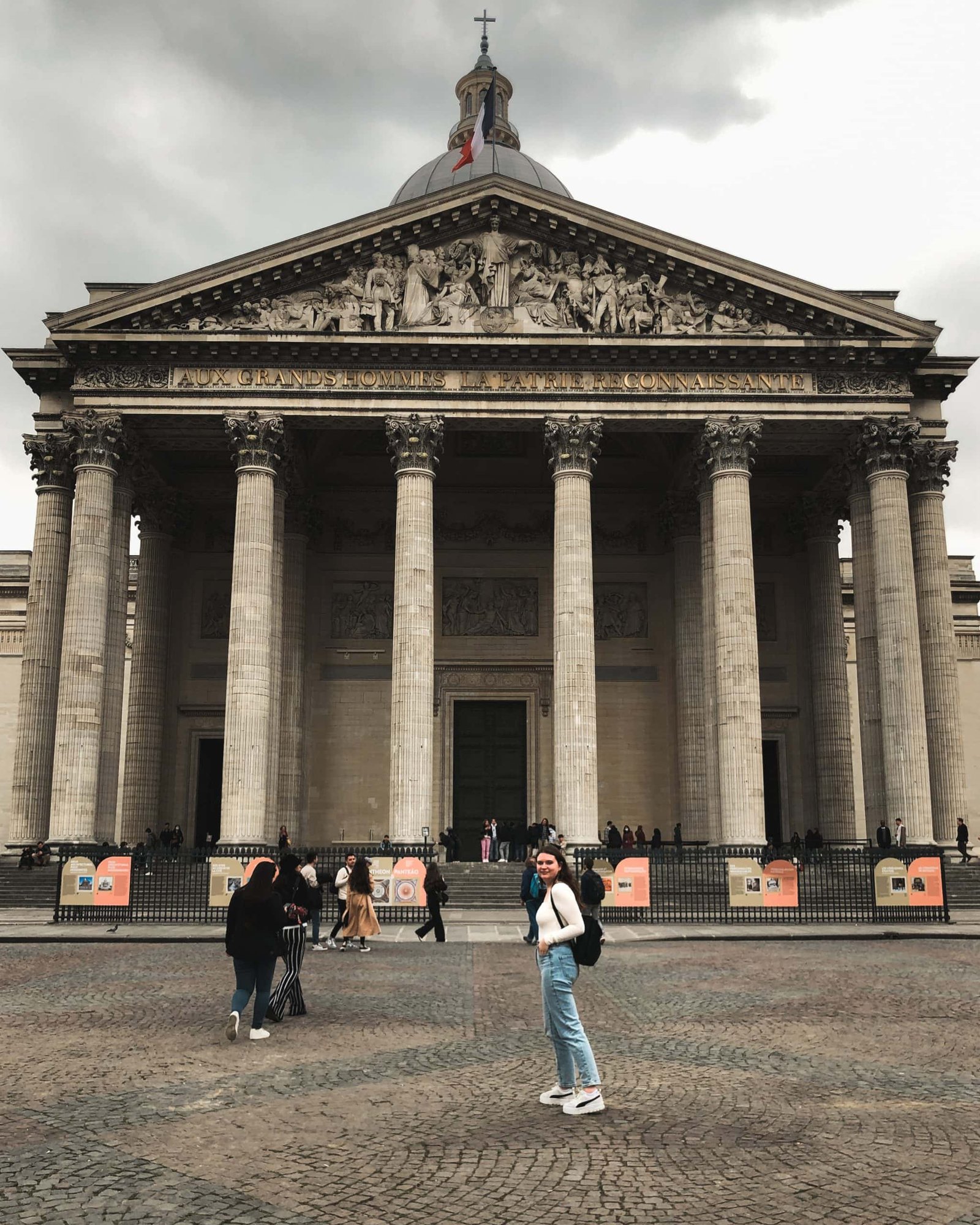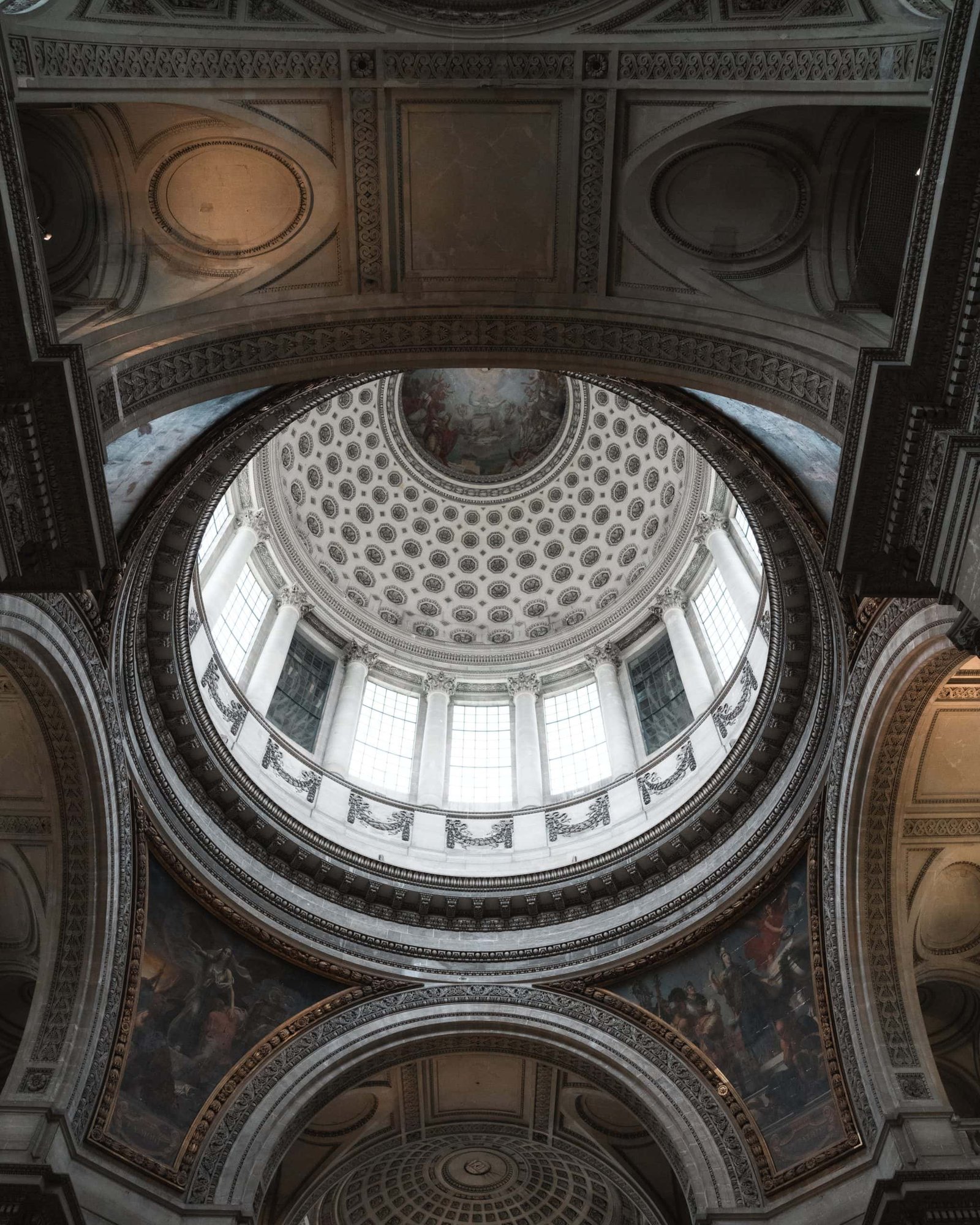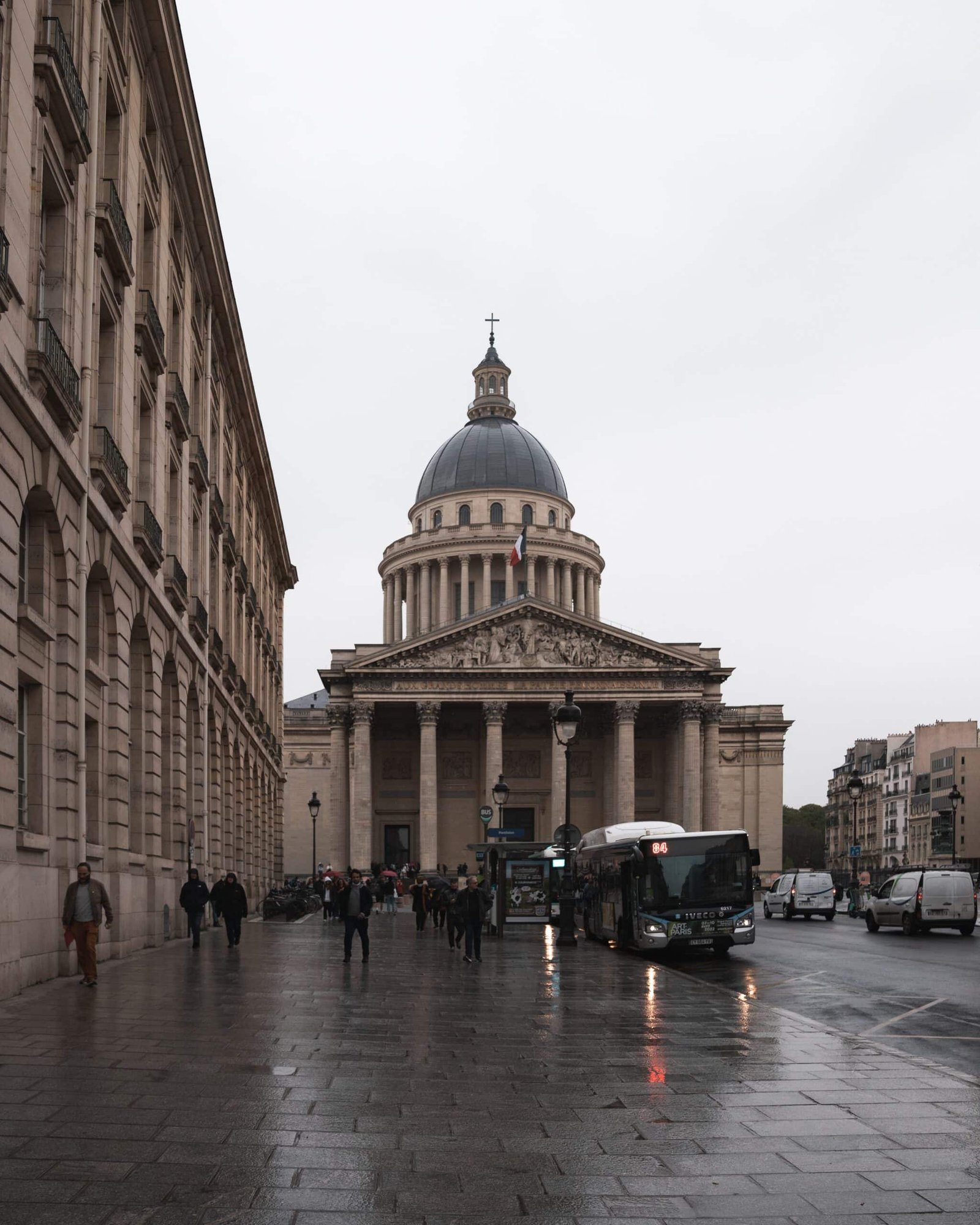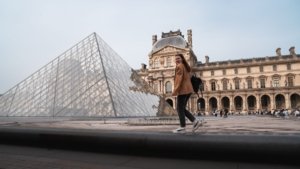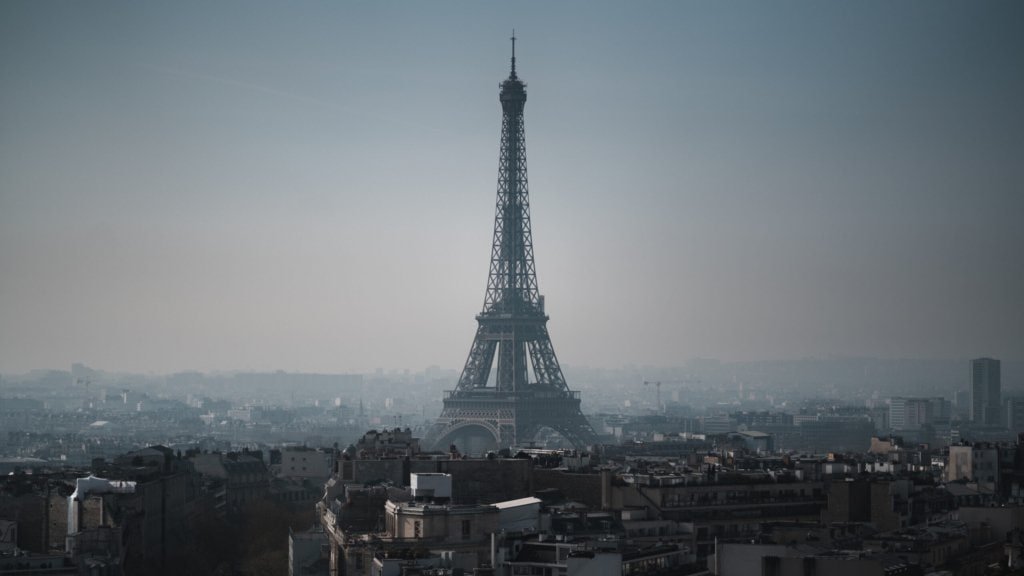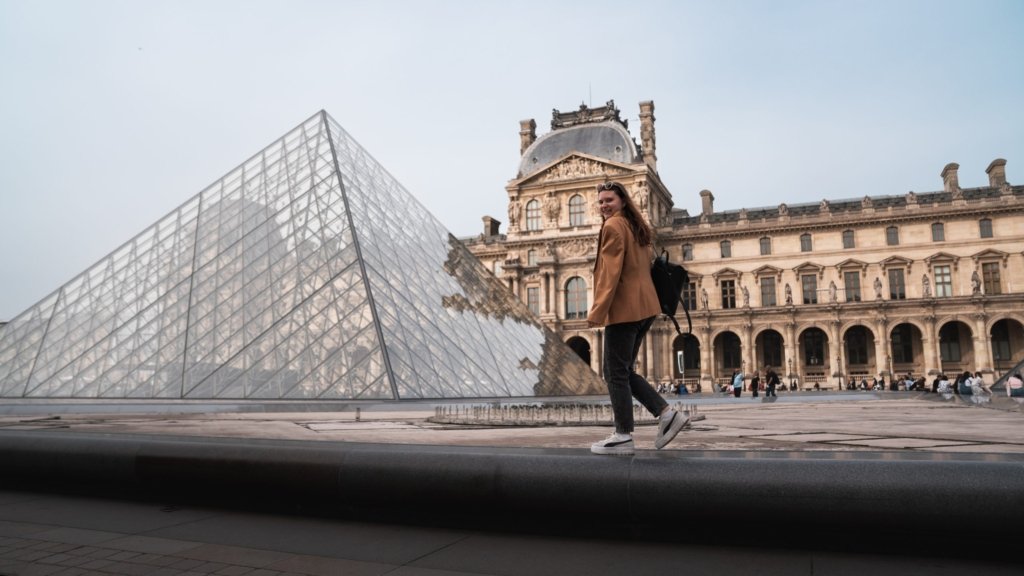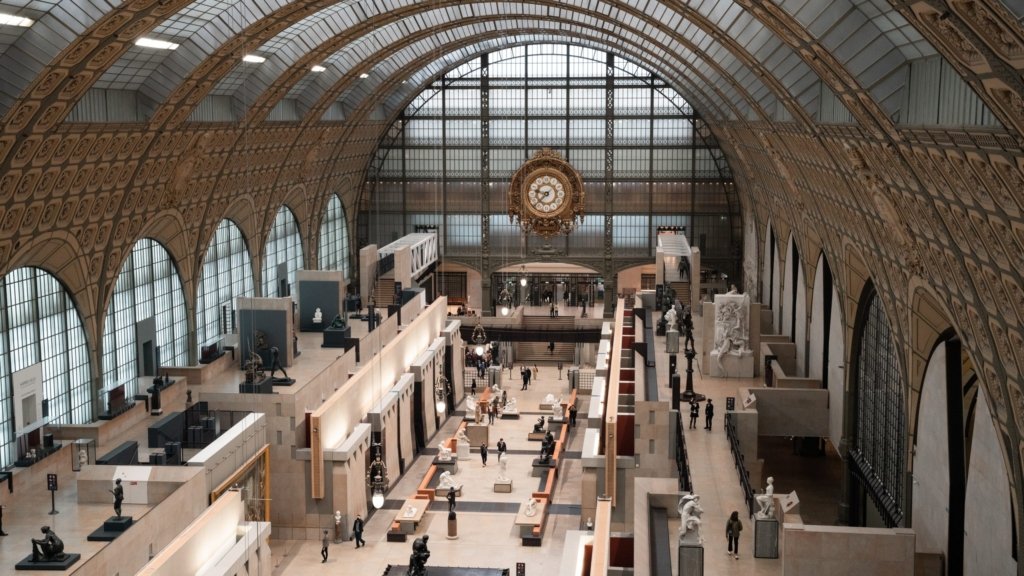Majestically enthroned on the hill of Sainte-Geneviève in the 5th arrondissement of Paris, the Panthéon is an impressive testimony to French history and culture. Originally a church, the cathedral is now a national monument and the burial place of some of France’s most important personalities.
Architectural splendour and historical significance
Designed by the architect Jacques-Germain Soufflot, the neoclassical building combines Gothic and neoclassical elements. It dominates the skyline of the Latin Quarter with its imposing dome, visible from afar. Construction began in 1764 at the behest of King Louis XV and was completed in 1790, just at the time when the French Revolution radically changed the purpose of the building.
Its transformation from a church to a secular monument reflects the turbulent political and social changes that France was undergoing at the end of the 18th century. As the final resting place of the ‘great men’ (and later women) whom the country honoured, the Panthéon became a symbol of the new republican values.
The crypt: a mirror of French greatness
A total of 81 great figures in French history are buried in the vast crypt of the Panthéon. They include writers such as Victor Hugo and Émile Zola, scientists such as Marie Curie, philosophers such as Voltaire and Jean-Jacques Rousseau, and resistance fighters from the Second World War.
Inclusion in the Panthéon, a process known as ‘Panthéonisation’, is one of the highest honours that France can bestow on its citizens. It is an act of great symbolic importance that shapes and expresses the collective memory and national identity of France.
Scientific fascination: the Foucault pendulum
The Foucault pendulum is one of the highlights of the Panthéon. This impressive scientific instrument elegantly demonstrates the rotation of the Earth. The pendulum hangs from the mighty dome and swings in a plane that actually shows the rotation of the Earth beneath it. The combination of science and history at the Panthéon is fascinating.
A visit to the Panthéon
A visit to the Panthéon is a journey through French history and culture. It is a must see for any visitor to Paris for its stunning architecture, important tombs and artistic decoration. With a viewing platform that offers breathtaking views of Paris, the Panthéon is a unique combination of past and present. The Panthéon is open all year round, with longer opening hours during the summer months. Guided tours offer a deeper insight into the history and significance of this national monument.
The Panthéon is a symbol of French greatness and republican values. It is a place of worship, reflection and inspiration. It embodies the complex history of France and invites visitors to reflect on the ideals and personalities that have shaped the nation.

